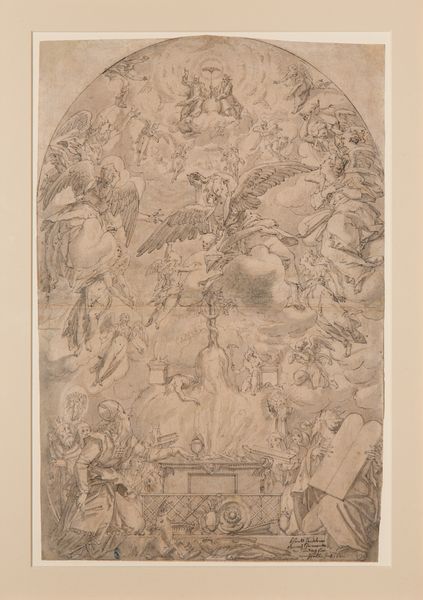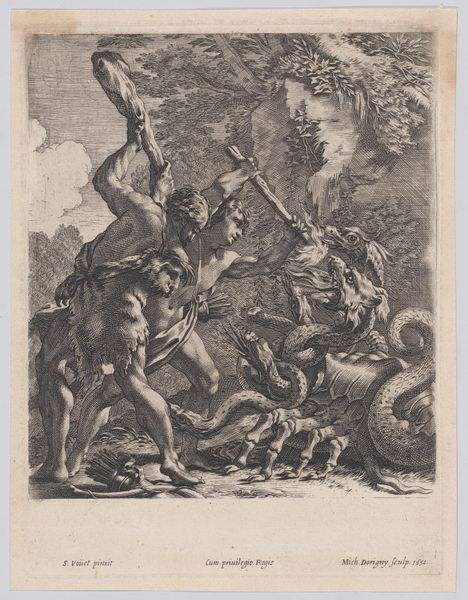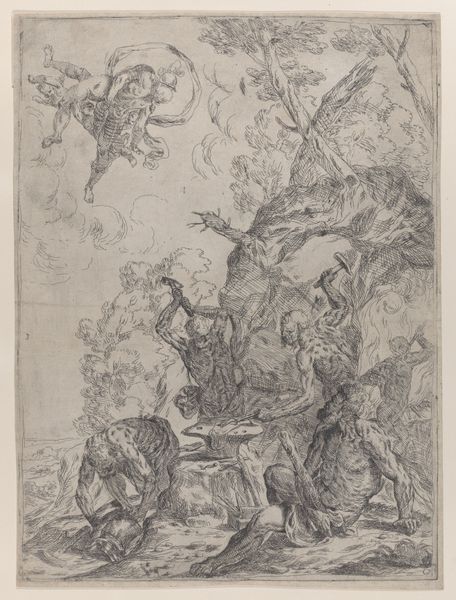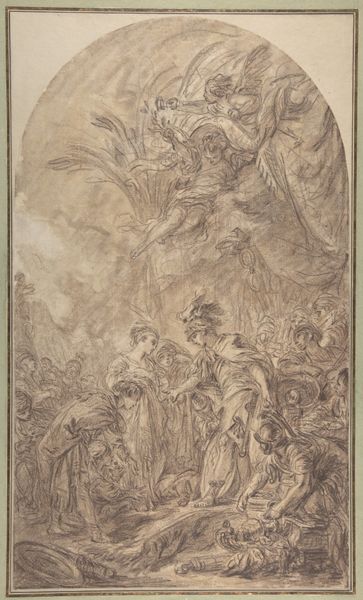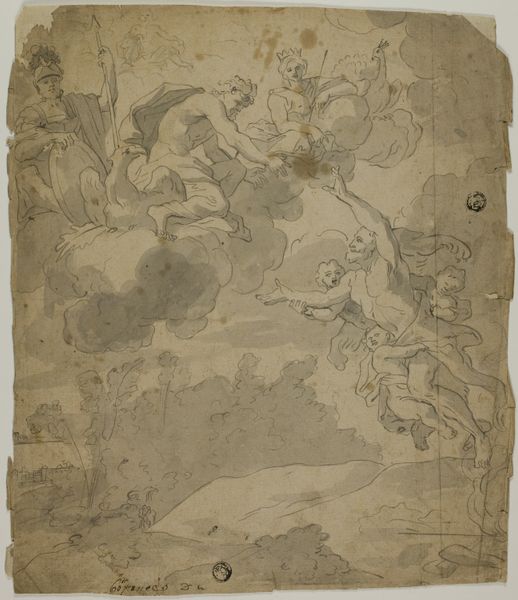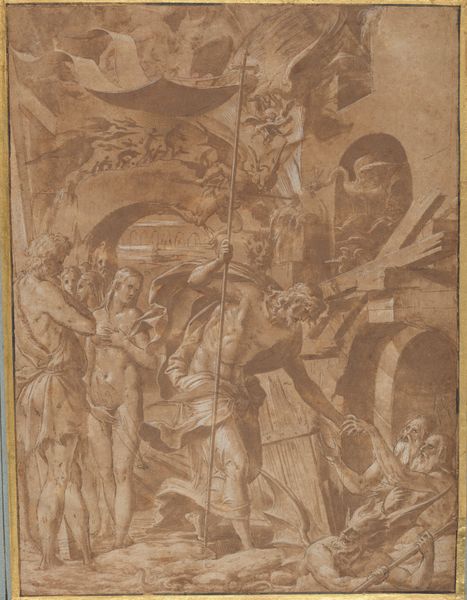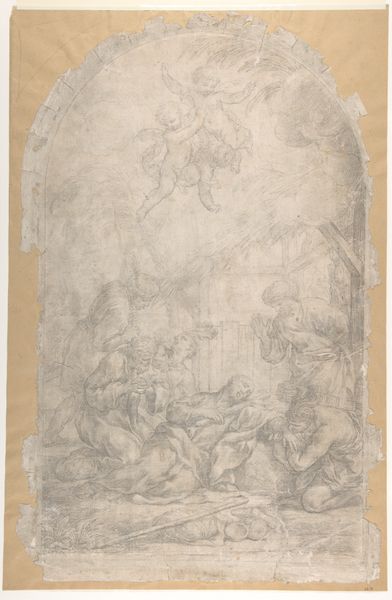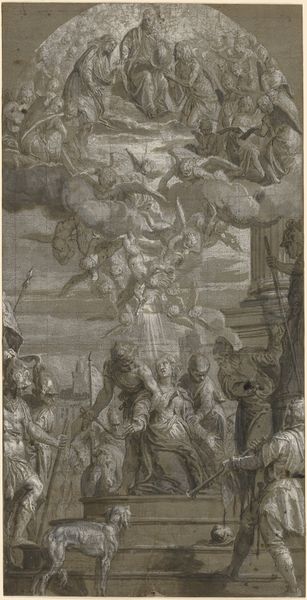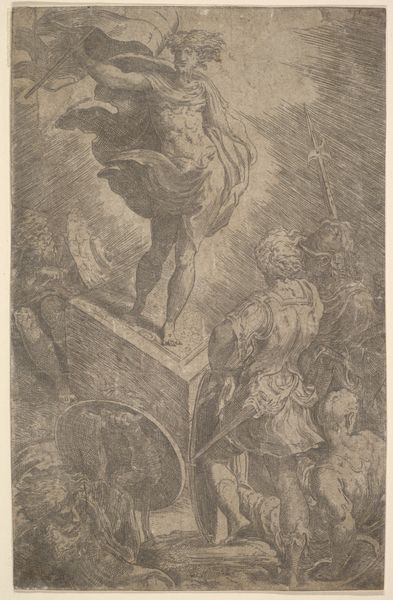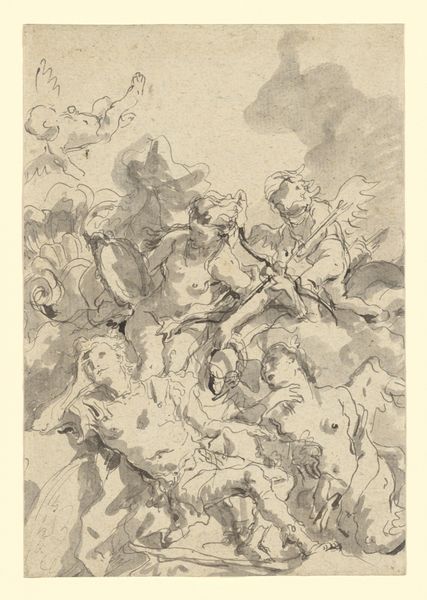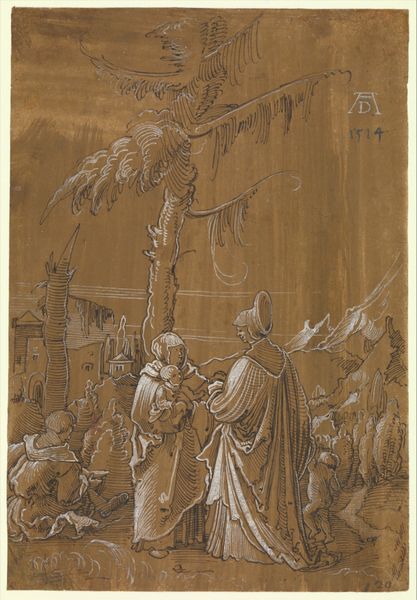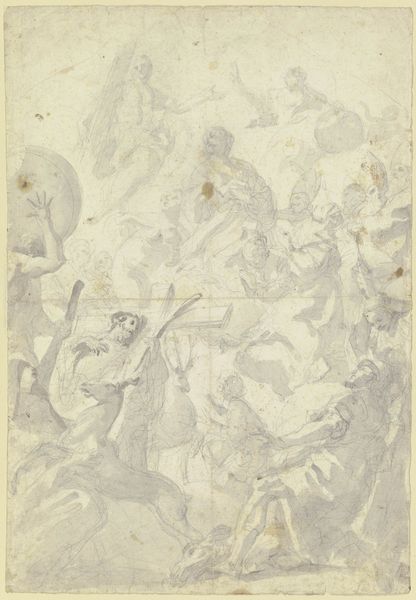
Martyrium des Heiligen Veit, der nackte Heilige, von Folterknechten umgeben, am Ölkessel, in der Luft Engel mit der Märtyrerkrone 1790
0:00
0:00
Copyright: Public Domain
Curator: What a dramatic composition! The shades of gray and white give the scene a certain intensity. Editor: Indeed. This drawing by Martin Johann Schmidt, made around 1790, depicts the martyrdom of Saint Vitus. It is a preparatory study that combines chalk, charcoal, ink and gouache on paper. Curator: Knowing it is a preparatory study explains the visible layering and sketching process. I’m drawn to the material reality of the artwork. We see the artist experimenting with different forms, lines, and shading, leaving visible marks of creation and production. How fascinating! Editor: It is compelling. This particular scene of Saint Vitus being tortured really reflects the intense religious and political climates of the time. Representations of religious figures facing persecution served to bolster faith but also highlighted injustices. The ruling class could also then align with the “saints” when they faced any kind of opposition, for example in France. Curator: The angel hovering above the boiling oil, bestowing the crown of martyrdom, suggests a duality. Divine reward contrasted against human brutality. I can’t help but imagine how the paper itself – the sourcing, the preparation – was part of the wider network of material exchange at the time. How accessible were such art supplies? Were they locally produced or imported from distant mills? Editor: A fascinating avenue to consider! From an activist perspective, let's consider that Saint Vitus is presented almost as a Christ-like figure. There’s definitely an argument to be made about power structures being enforced here, both ecclesiastic and aristocratic. Curator: These studies usually offer glimpses into workshops. Were assistants involved? Was it common practice? Did different hands contribute? It invites considerations around divisions of labour. Editor: Indeed! That brings attention to whose voices are validated through art. By understanding the societal and economic framework within which Schmidt operated, we shed more light on how such dramatic hagiographies impacted viewers then, and even us now. Curator: Analyzing the materiality, as well as process involved deepens our engagement, certainly prompting us to think beyond conventional art historical perspectives. Editor: And for me, placing this drawing within larger societal structures underscores both historical and current themes, offering us insights on religious authority.
Comments
No comments
Be the first to comment and join the conversation on the ultimate creative platform.

